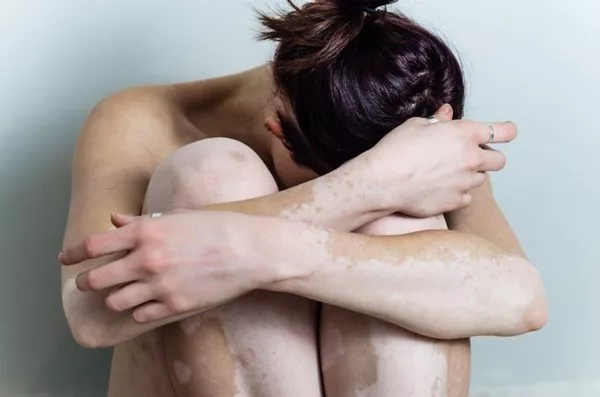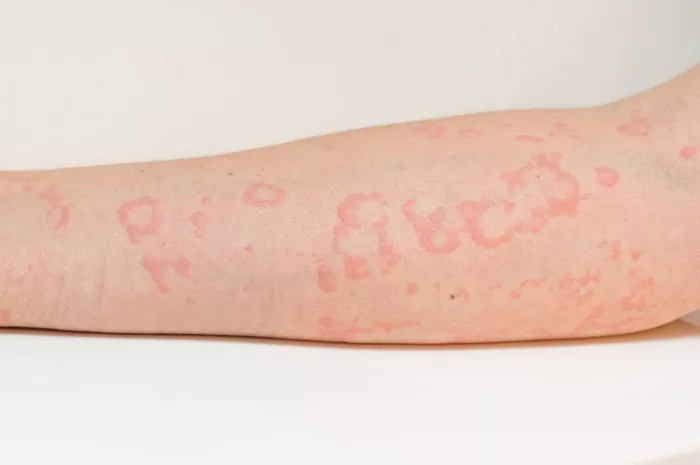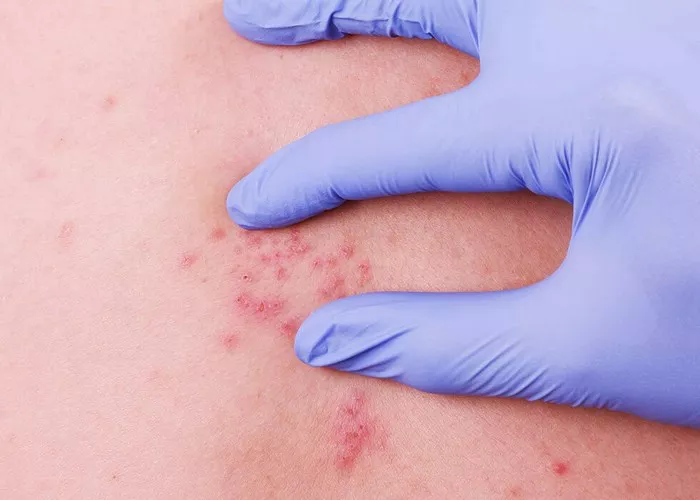Vitiligo is a chronic skin condition characterized by the loss of pigmentation in patches of the skin. This condition can affect people of any age, gender, or ethnic group. While the exact cause of vitiligo remains unclear, it is generally believed to be an autoimmune disorder in which the body’s immune system attacks and destroys the melanocytes, the cells responsible for producing melanin, the pigment that gives skin its color. This article delves into the various factors that can contribute to the sudden onset of vitiligo, exploring genetic predispositions, environmental triggers, and immune system malfunctions.
Genetic Predisposition
One of the primary factors believed to contribute to the onset of vitiligo is genetics. Studies have shown that vitiligo often runs in families, suggesting a hereditary component. Researchers have identified several genes associated with an increased risk of developing vitiligo, such as NLRP1 and PTPN22, which are also linked to other autoimmune diseases. These genes are thought to play a role in the immune system’s function, potentially making individuals more susceptible to autoimmune attacks on melanocytes.
Furthermore, vitiligo is often seen in conjunction with other autoimmune disorders, such as thyroid disease, type 1 diabetes, and alopecia areata. This co-occurrence supports the notion that there is a genetic component that predisposes individuals to autoimmune conditions, including vitiligo.
Immune System Malfunctions
The immune system’s role in vitiligo is a significant area of study. In individuals with vitiligo, the immune system mistakenly targets and destroys melanocytes. This autoimmune response is thought to be triggered by a combination of genetic and environmental factors.
In a healthy immune system, there is a balance between immune cells that promote inflammation and those that suppress it. However, in people with vitiligo, this balance is disrupted, leading to an overactive immune response. Specifically, T cells, a type of white blood cell, become overactive and attack melanocytes. This autoimmune activity results in the loss of pigment and the formation of white patches on the skin.
Environmental Triggers
While genetics play a crucial role in predisposing individuals to vitiligo, environmental factors are often the catalysts that trigger the onset of the condition. Several environmental factors have been implicated in the development of vitiligo, including:
1. Physical and Emotional Stress
Stress, both physical and emotional, is frequently cited as a trigger for vitiligo. Physical stress, such as trauma to the skin (known as the Koebner phenomenon), sunburn, or exposure to certain chemicals, can initiate the depigmentation process. Emotional stress, such as the loss of a loved one, divorce, or major life changes, can also contribute to the onset of vitiligo. Stress is believed to affect the immune system, potentially leading to an autoimmune response that targets melanocytes.
2. Chemical Exposure
Exposure to certain chemicals can trigger vitiligo in susceptible individuals. For example, phenolic compounds, often found in hair dyes and other cosmetic products, have been linked to the onset of vitiligo. These chemicals can damage melanocytes directly or trigger an immune response that leads to their destruction.
3. Infections
Infections, particularly viral infections, have been suggested as potential triggers for vitiligo. Viral infections can alter the immune system’s functioning, leading to an autoimmune response. In some cases, the body’s immune response to a viral infection may mistakenly target melanocytes, resulting in vitiligo.
Oxidative Stress
Oxidative stress, an imbalance between the production of free radicals and the body’s ability to detoxify them, has also been implicated in the development of vitiligo. Melanocytes are particularly susceptible to oxidative stress because they produce melanin, a process that generates reactive oxygen species (ROS) as byproducts. In individuals with vitiligo, there is evidence of increased oxidative stress and decreased antioxidant defenses in the skin. This imbalance can lead to the damage and destruction of melanocytes, contributing to the depigmentation process.
Neurochemical Factors
The connection between the nervous system and vitiligo is another area of interest for researchers. Some studies suggest that neurochemical factors, such as the release of neuropeptides, can influence the development of vitiligo. Neuropeptides are small protein-like molecules used by neurons to communicate with each other and other cells. They can affect skin cells, including melanocytes, potentially leading to their destruction in vitiligo.
SEE ALSO: Does Vitiligo Cause Pain
Autoantibodies
Autoantibodies, which are antibodies that mistakenly target and react with a person’s own tissues, have been found in individuals with vitiligo. These autoantibodies can target melanocytes, marking them for destruction by the immune system. The presence of autoantibodies is another piece of evidence supporting the autoimmune nature of vitiligo.
Hormonal Factors
Hormonal changes can also play a role in the onset of vitiligo. Many people report the onset or worsening of vitiligo during periods of hormonal change, such as puberty, pregnancy, or menopause. Hormonal fluctuations can affect the immune system and the skin, potentially contributing to the development of vitiligo.
Genetic and Epigenetic Interactions
Recent research has highlighted the importance of epigenetics in the development of vitiligo. Epigenetics refers to changes in gene expression that do not involve alterations to the underlying DNA sequence. Environmental factors, such as stress, diet, and exposure to toxins, can influence epigenetic changes, which in turn can affect the immune system and the development of autoimmune diseases like vitiligo.
Family History and Heredity
The likelihood of developing vitiligo increases if a close relative also has the condition. This familial tendency suggests that hereditary factors play a significant role. However, the exact mode of inheritance is complex and likely involves multiple genes and environmental interactions.
Vitamin D Deficiency
There is evidence to suggest that vitamin D deficiency may be linked to the development of vitiligo. Vitamin D is crucial for maintaining healthy immune function and skin health. A deficiency in this vitamin could potentially contribute to the autoimmune process that leads to vitiligo.
The Role of the Microbiome
Emerging research indicates that the skin and gut microbiome may influence the development of vitiligo. The microbiome, which consists of the trillions of microorganisms living on and within our bodies, plays a crucial role in maintaining immune homeostasis. Dysbiosis, or an imbalance in the microbiome, can contribute to immune dysfunction and the development of autoimmune diseases, including vitiligo.
Psychological Impact and Social Stigma
While the psychological impact and social stigma associated with vitiligo do not cause the condition, they are important considerations for individuals who develop vitiligo. The sudden onset of vitiligo can be distressing, leading to emotional and psychological challenges. Social stigma and misconceptions about the condition can further exacerbate these issues, making it essential to provide support and education for those affected.
Current Research and Future Directions
Research into the causes of vitiligo is ongoing, with scientists exploring various aspects of the immune system, genetics, and environmental factors. Advances in genetic research, including genome-wide association studies (GWAS), are helping to identify new genes and pathways involved in vitiligo. Additionally, studies on the microbiome and epigenetics are shedding light on the complex interactions between our environment, our genes, and our immune system.
New treatment options are also being explored, focusing on restoring pigmentation and modulating the immune response. For example, JAK inhibitors, which are drugs that inhibit certain enzymes involved in the immune response, have shown promise in clinical trials for vitiligo. These treatments aim to halt the autoimmune attack on melanocytes and promote repigmentation of the skin.
Conclusion
Vitiligo is a complex condition with a multifactorial etiology. The sudden onset of vitiligo can be attributed to a combination of genetic predisposition, immune system malfunctions, environmental triggers, oxidative stress, neurochemical factors, and hormonal changes. Understanding these factors is crucial for developing effective treatments and providing support for individuals affected by vitiligo. Ongoing research continues to unravel the intricate mechanisms underlying this condition, offering hope for improved therapies and a better quality of life for those living with vitiligo.
Related Topics:


























